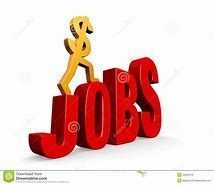
13 Aug 1.8 Million Jobs Added in July
According to a recent article in the Society for Human Resource Management, the US unemployment rate has drooped to 10%. The article below describes in detail how the job market is slowly coming back amid Corona virus uptick in some US states.
US employers added 1.8 million jobs in July, pushing the unemployment rate down to 10.2 percent, even as rising coronavirus cases have caused states to scale back their reopening plans. Less than half of the jobs lost since the pandemic hit earlier this year have been recovered, according to the latest employment report from the Bureau of Labor Statistics.
“Today’s jobs report shows three months in a row of payroll employment gains, but because so many jobs were lost in March and April, we are still 12.9 million jobs below where we were in February, before the pandemic spread,” said Elise Gould, senior economist at the Economic Policy Institute based in Washington, D.C. “The slowdown in jobs gained is likely due to a resurgence of the coronavirus and re-shuttering in parts of the country.”
The economic recovery lost steam in July, agreed Daniel Zhao, senior economist at Glassdoor. “The largest gains are coming from rehiring among hard-hit industries and although unemployment fell to 10.2 percent, it’s at its highest point in decades and remains above peak unemployment seen during the Great Recession. The slowdown we’re seeing is a reminder that a return to economic stability is ultimately hinged on addressing the public health crisis.”
Julia Pollak, a labor economist at online employment marketplace ZipRecruiter, said that monthly payrolls would need to rise by about 2.5 million to regain all the jobs lost due to the pandemic by the end of the year.
“The dynamic currently playing out in the labor market resembles a scenario that’s a hybrid of a natural disaster and a deep recession,” said Josh Wright, chief economist at Wrightside Advisors, an economic research and consulting firm based in New York City. “Of course, the slowdown also likely reflects the pause and reversal of reopenings that occurred as coronavirus cases began resurging across the country. The longer these disruptions last, the more jobs losses and business closures will become permanent, an ominous sign that we may already be shifting gears from natural-disaster dynamics to recession dynamics.”
Reopening Drives Hiring
Employment gains were once again propelled by hiring in the leisure and hospitality sector, with 592,000 jobs added, accounting for about one-third of the total gained for the month. Bars and restaurants added 500,000 of those jobs, coming in about 2.6 million behind where they were before the pandemic.
Retail employment also increased, with 258,000 jobs added and health care rebounded by 126,000 jobs as dentists’ (45,000 new jobs) and doctors’ offices (26,000 new jobs) continue to reopen. Job losses continued in nursing and residential care facilities (-28,000), and employment in health care overall is down by nearly 800,000 since February.
Child day care services gained 45,000 jobs in July, manufacturers added 26,000 new jobs, auto makers added 39,000 workers and construction employment rose by 20,000.
“Job growth was not only insufficient, but its distribution is showing some ominous signs,” Bunker said. “Information [containing technology and media], a sector not directly affected by the virus, is now the industry that’s taken the third largest cumulative hit.”
The significant increases in public-sector employment in the report should be “completely discounted,” Gould said, driven by seasonal adjustments. “We’ve seen large reductions in state and local public-sector employment over the last few months and it remains 1.1 million below its level in February.
Pollak added that the number of unemployed workers on temporary layoff decreased by 1.3 million in July to 9.2 million, about half its April level, a key statistic showing that the majority of growth is still largely being driven by rehiring furloughed workers.
“Although we still have a long way to go in the recovery it’s encouraging to see sectors like retail, education and government hiring as states open up,” said Becky Frankiewicz, president of ManpowerGroup North America. “We predict we will continue to see this improvement with employers hiring in three key areas: transforming business (such as web/app developers and cyber experts); helping people (health care assistants, health tech and physicians); and moving things (logistics and warehousing). For all employers it’s key to remember that this recovery is based on how safe people feel about a return. Consumer feelings are the driver of the economy.”
Unemployment Still Troublingly High
Just five months ago, the unemployment rate was hovering around a 50-year low of 3.5 percent.
“The total number of unemployed remains elevated at more than 16 million, some 10.6 million above pre-pandemic levels,” said Mark Hamrick, senior economic analyst at Bankrate, a personal finance site in New York City. “In addition, there’s 8.4 million people working part-time who want full-time work,” he said.
“At this level, the unemployment rate remains higher than the worst month of the Great Recession, when it hit 10 percent in 2009,” Gould said. “If workers who were sidelined as a result of the coronavirus—either out of the labor force or misclassified as employed, not at work—were included, the unemployment rate would be 13.8 percent.
But the labor force participation was essentially flat, “meaning the drop [in unemployment] was a sign of workers actually getting jobs,” Bunker said. “Joblessness is still tremendously high, but it is moving in the right direction.”
The unemployment rate for black workers dropped to 14.6 percent in July, compared with 12.9 percent for Hispanics, 12 percent for Asians and 9.2 percent for white workers. The gap in unemployment between black and white workers widened to 5.4 percent from 5.3 percent in June and from 2.7 percent in February pre-COVID-19.




